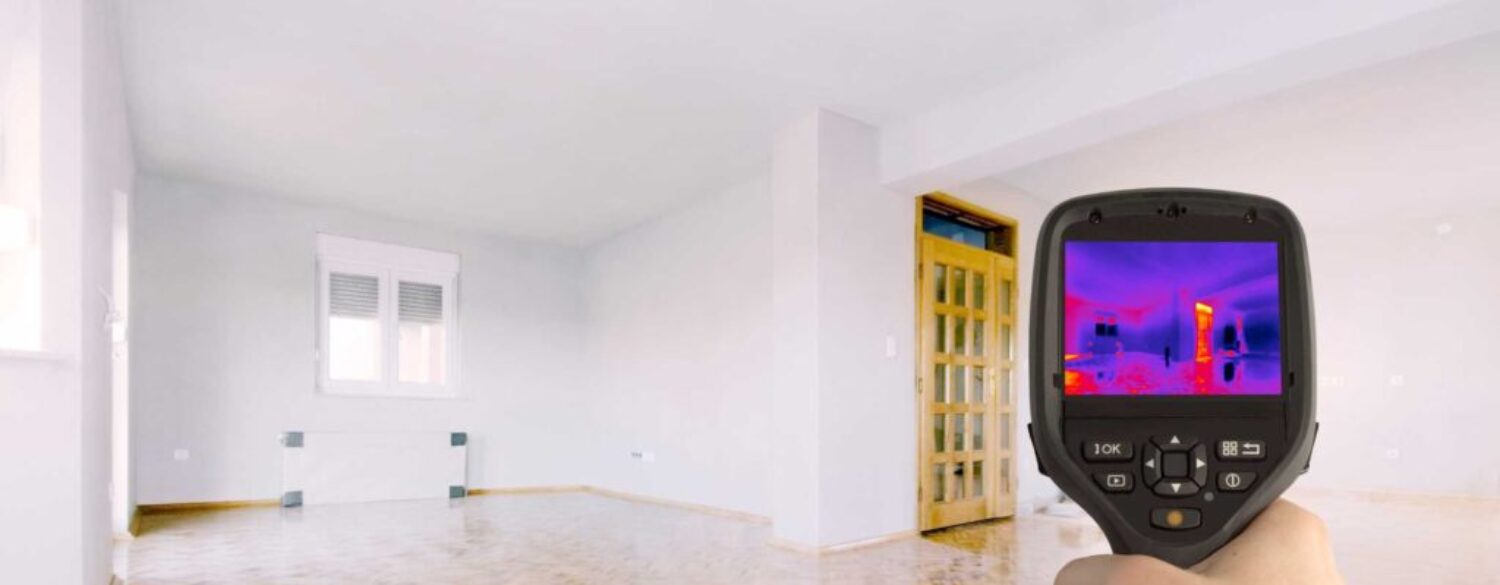What is Thermal Imaging and What Qualifies an Inspector to Use It?
A home inspection is an important step in the process of buying a house, or if you’re determining what repairs need to be done in your current home. Thermal imaging is a type of technology that amplifies the typical home inspection by providing detail and information about a home’s components that cannot be seen with the naked eye. Thermal imaging can help detect energy loss, moisture, hot spots, plumbing leaks, and more. Because these issues usually take a while to present themselves visually, thermal imaging can catch warning signs so you have time to complete necessary repairs. Read on to learn how thermal imaging works, why it’s important, and what qualifies a home inspector to use the technology in your next home inspection.
What Is Thermal Imaging?
Thermal imaging is a non-invasive technology that detects temperatures and moisture levels on surfaces like walls, ceilings, floors, and around windows and doors. As an inspector passes a camera over certain areas, it produces a color-coded “heat map” to show where a home may be losing heat through door and window cracks.
Hot areas are usually indicated by yellow, red, white or orange, while cold areas that are losing heat are blue or purple in thermal images.
Thermal imaging is a complement to visual inspection rather than a standalone method, so its results should be interpreted alongside visual observations.
How Does Thermal Imaging Work?
Thermal imaging is the process of transforming an infrared image into a radiometric one that allows temperature values to be read from the image. Thermal cameras, sometimes known as infrared cameras, are designed to see heat that radiates from objects.
Thermal imaging works by sensing light from an electromagnetic spectrum that is invisible to the human eye. We can see light in the visible light spectrum in the form of colors, textures, and shapes. Infrared devices are not like x-rays that “see through” solid materials; rather, they reveal areas of hot and cold temperatures that can indicate common household issues.
What Do Inspectors Need to Know When Using Thermal Imaging?
Inspectors need to communicate the capabilities of thermal imaging to clients and explain how and why thermal imaging is important to a home inspection. Homeowners should feel comfortable having the process completed in their home knowing that inspectors are fluent with the device, understand its uses, and will present results from the thermal inspection in the final report.
Home inspectors should mention that thermal imaging results must be read in tandem with visual reviews and the larger context of the entire inspection. One thermal camera reading may not mean that a homeowner needs to complete costly repairs immediately, but it can be a sign of issues to look out for in the future.
It’s also important that home inspectors know how to translate the technical and scientific jargon of thermal imaging into language that average home owners can understand.
Aside from knowing how to calibrate the camera properly, a home inspector should:
- Be certified by an accredited thermal training program
- Understand concepts behind building envelope science
- Know how to interpret thermal images and articulate results to clients
- Understand how HVAC systems work
- Explain potential issues based on thermal patterns
Thermal imaging is a useful technology that can detect warning signs of issues that may get worse down the road if not addressed. If you’re ready to schedule an inspection using thermal imaging devices for your home, contact South Sound Inspections today.



